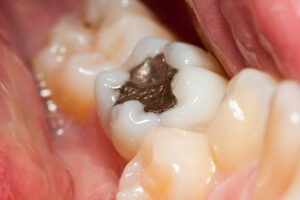Dental fillings, the unsung heroes of oral health, are fundamental in our day-to-day life. Playing a pivotal role in salvaging our precious teeth, they are the go-to solution when it comes to combating cavities. Whether it’s munching on our beloved treats or flashing that winning smile, our teeth, restored by dental fillings, make it all possible. In this guide, we will journey through the ins and outs of dental fillings, understanding their purpose, the process, and the people who need them.
Prevalence and Importance of Dental Fillings: An Overview of Statistics
A deep dive into the statistics paints a telling picture of the prevalence of dental fillings. According to the Centers for Disease Control and Prevention (CDC), over 90% of adults aged 20-64 years have had a cavity, and a significant 26% have untreated tooth decay. Moreover, 21% of children aged 6-11 and 58% of adolescents aged 12-19 have had cavities in their permanent teeth, showing that fillings are an integral part of dental care for people of all ages. Through dental fillings, these populations are able to continue to eat, speak, and live comfortably despite the prevalence of dental decay. This underscores the importance of understanding dental fillings – what they are, who needs them, and how they are placed and cared for.
What Are Dental Fillings?

Dental fillings are materials used to fill a cavity in a tooth, restoring its original function and structure. They help prevent further decay by sealing off any spaces where bacteria could enter.
Different kinds of fillings:
According to the Oral Health Foundation, here are a number of different fillings, including:
- Amalgam (silver coloured).
- Composite fillings (tooth coloured).
- Glass ionomer (tooth coloured).
- Gold inlays and onlays (gold coloured).
- Porcelain inlays (tooth coloured).
Who Needs Them?
Anyone with a cavity needs a filling to prevent further tooth decay. Regular dental checkups are crucial for early detection. Additionally, if you have tooth sensitivity to hot, cold, or sweet foods and drinks, it might be a sign you need a filling.
Preparing for Dental Fillings
Before the procedure, your dentist will conduct a thorough examination and discuss the most appropriate filling material for your specific situation. You might also need to reduce the intake of sugary foods and drinks to prevent further tooth decay.
The Procedure
The dental filling procedure is typically straightforward and completed within an hour. It involves removing the decayed tooth material, cleaning the affected area, and filling the cleaned-out cavity with a filling material.
The Aftercare
Regular oral hygiene is crucial to ensure the longevity of dental fillings. This includes brushing twice a day, flossing daily, and having regular dental checkups to monitor the health of your filled tooth.
Alternatives to Dental Fillings: A Comparison
While fillings are effective for smaller cavities, dental inlays and onlays are used for larger cavities where a traditional filling might not be sufficient but a crown isn’t necessary yet. In contrast, dental crowns are used when a tooth is severely damaged or decayed, offering complete coverage and protection.
Dental fillings are a fundamental aspect of oral health. They help to restore the function and health of teeth affected by cavities. Thus, they play an essential role in maintaining a healthy, functional smile. If you want to learn more about our dental filling services, feel free to get in touch.



